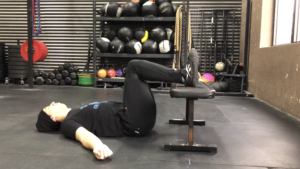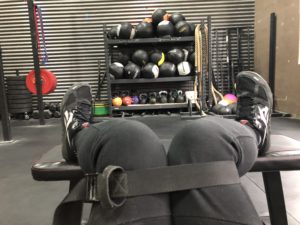Self defense is important, but let’s be honest, does it work? Largely the failure of self defense techniques to work and adequately prepare people for altercations is the fact that the emphasis is entirely misplaced. The majority of self defense protocols place too much emphasis on techniques and for preparing for a very limited set of scenarios. Where the most emphasis should be placed is on pre-contact awareness, danger avoidance, and application of raw power.
Most victims of violent crimes had a warning. They often describe a “bad feeling’ that preceded the incident. It is imperative that we teach people to recognize and react to those “bad feelings.” Victims are quick to dismiss those feelings (“it’s just my imagination”) and then later regret it. It is better to suffer some embarrassment for creating “a scene” by shouting, looking for help, crossing the street, or running, than it is to realize too late that that uneasy feeling was legitimate.
It is hard to over emphasize how much more important it is to learn how to be aware of your surroundings, than it is to learn how to fight your way out of an otherwise avoidable situation. Learn how to avoid high risk areas. Keep an eye on your surroundings. Look at the people that are around you and notice their features. Avoid zoning out and looking at your phone when you’re alone and vulnerable.
The next problem is focusing in techniques. I have practiced and taught jiujitsu for a really long time. In fact I have taught many movement modalities such as yoga, kettlebells, gymnastics, weightlifting, and more. And one thing is true, movement is a skill. Everyone starts as a beginner. The more complex the movement, the longer it takes to learn it and master it. I have seen countless people come and learn a handful of basic techniques on one night and the next week or even the next night they come back and cannot recall any of the techniques. It is only through countless hours of practice and training that people are able to learn a technique well enough to use it on a larger opponent that is resisting and simultaneously trying to harm them.
It is very wishful thinking indeed to imagine that attending a single self defense seminar can adequately prepare someone for a dangerous confrontation. While such seminars are good and can really do a lot to help empower women (and men). They can also provide a dangerous level of false hope. Leaving a seminar thinking that you are adequately prepared to defend yourself against a larger attacker will no doubt have very bad repercussions. There is no doubt that being proficient in jiujitsu can save your life. However, dabbling can get you hurt. If you want to have skills that will serve you in a real life situation, these skills must be practiced and developed and in your repertoire. Not just something you learned one time. We do not rise to the occasion, rather we sink to the level of our training.
The bigger issue is one of fitness. Are you fit enough is the question you should be asking yourself. Can you outrun someone that is chasing you and bent on doing you harm? Running from danger is probably the single best thing you can do to stay alive. Do not for second think about being a hero. If you have the choice between fight or flight, choose flight every time. The only time for fighting is when the choice to run has been taken away from you. But jogging isn’t going to save your life. And don’t imagine that you are somehow going to develop magical cardio super powers in the face of danger. You have to run sprints often and be prepared to run, jump, cut right or left and stiff arm a tackler. The fitter you are with respect to running, the safer you will be in the long run. All you need to train to be a better runner is a new pair of shoes and a stopwatch. Go run some sprints. They will save your life one day.
Don’t be fooled by what you see in movies. Chases in movies always look way faster and last a lot longer than what really happens. Go to the track one day and see how long it takes you go around one time (400m, a quarter mile). Notice how you probably got half way around the track and wanted to quit. Maintaining a fast sprint for a quarter mile is hard, but it will probably save your life. Go practice that instead of buying a can of pepper spray. Also it’s really good for you. You’ll be in better shape if you go to the track once a week and run some stairs once a week.
Get stronger. It doesn’t matter how many self defense classes you take and how much you practice your spinning back fist. If you cannot put some power behind your punches, they are just for show. Even if you know how to grapple and choke someone, you need to be strong enough to apply your moves to a larger and angrier opponent. Strength is one of the most important life saving attributes you can develop.
If someone bypasses your initial warning signals and gets close to you and if the option to run is taken away from you, it is then that you will have to fight. Real fights look like those on World Star not like what you see in the movies. Fancy techniques rarely work unless you have years of experience applying them and are in a “fair” one-on-one situation. Fear and anxiety will most likely impede your ability to do anything fancy and technical. You will most likely resort to basic animal instincts: hit hard to the vital organs.
At the end of the day, do you have the speed, strength, stamina, and will to persevere? These are elements of fitness that can be trained. When we do CrossFit, we work each of these attributes both independently and together. Get out there and train like your life depends on it.


